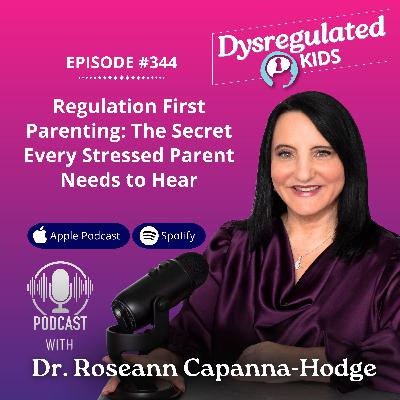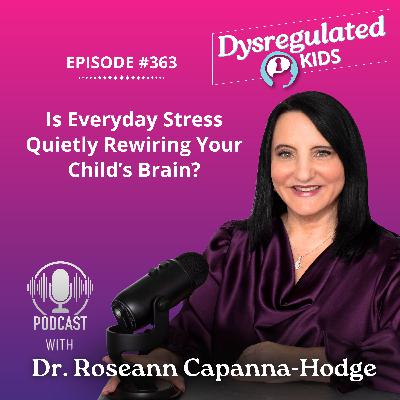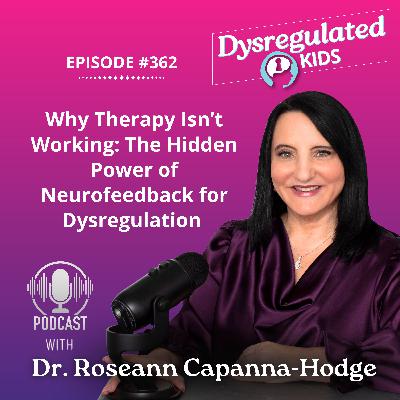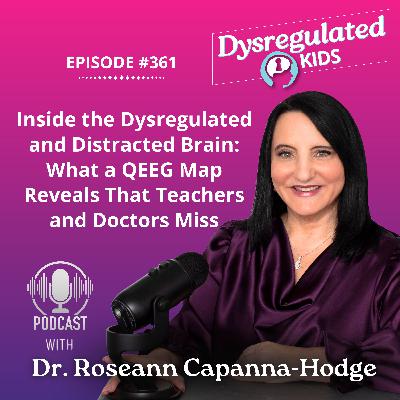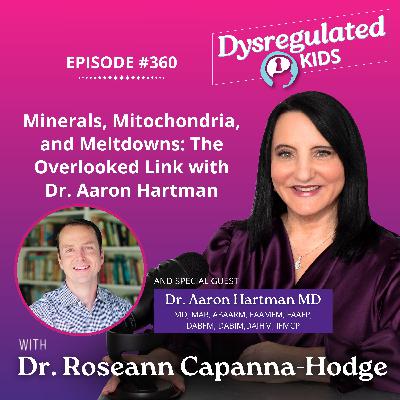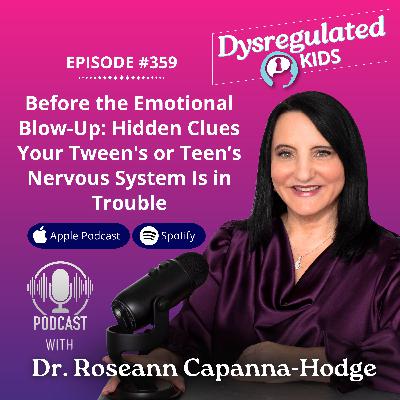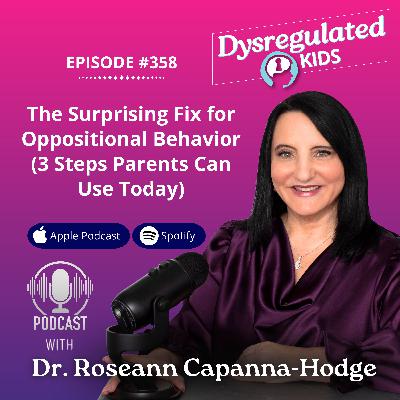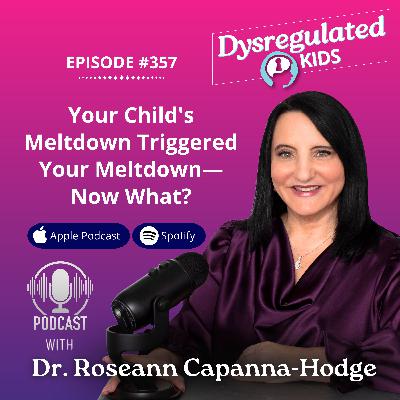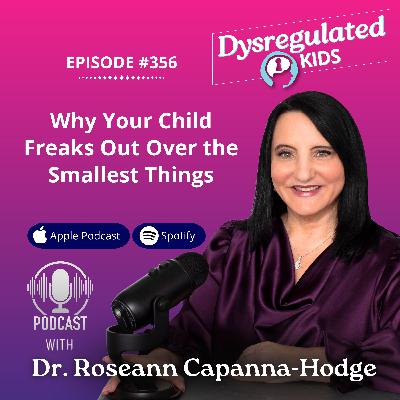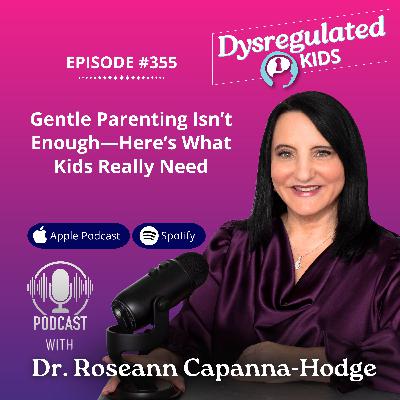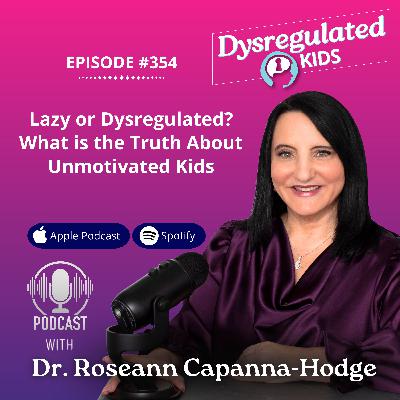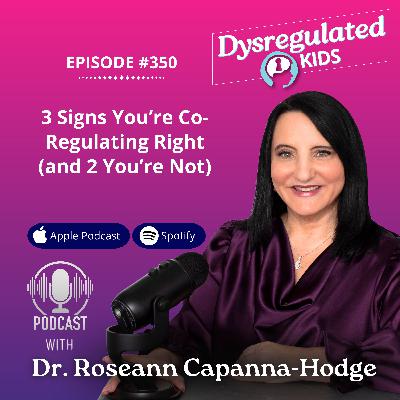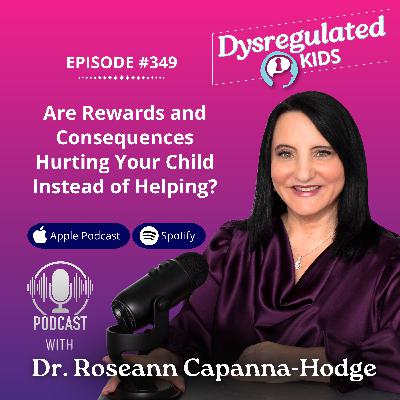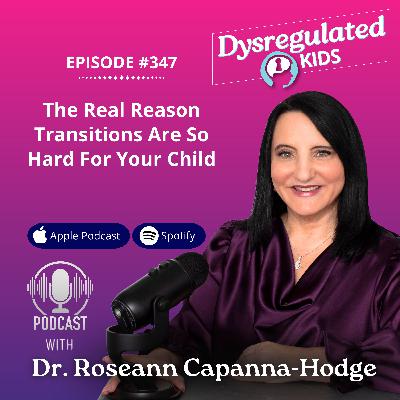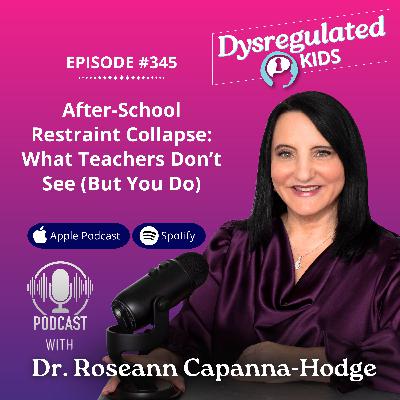344: Regulation First Parenting: The Secret Every Stressed Parent Needs to Hear
Description
Parenting a dysregulated child can leave you drained and second-guessing yourself. You try connecting, you set boundaries—yet the meltdowns, backtalk, and big emotions just don’t stop. But here’s the truth: it’s not bad parenting—it’s a dysregulated brain. And there is a way forward.
In this episode, I’ll introduce Regulation First Parenting—a practical, science-backed approach that helps children calm their nervous systems so connection and teaching can actually stick. You’ll learn why traditional parenting advice often backfires, how co-regulation works, and what steps you can take today to bring more peace into your home.
Why does my child melt down after school even when I try to connect?
Many parents wonder, “Why does my child explode the minute they walk through the door?” You’re not imagining it. When kids are running on stress responses, connection without regulation falls flat. Their nervous system is in survival mode, and even the kindest validation can unintentionally make anxiety and distress worse.
That’s why regulation has to come first. Until the brain is calm, your child simply can’t access learning, connection, or even your love in the way you want them to.
- Regulation comes before connection. A dysregulated brain can’t learn or fully receive your love and guidance.
- Gentle parenting without boundaries fuels dysregulation. Endless empathy without calm structure leaves kids feeling more overwhelmed.
- Behavior is communication. Every meltdown is your child’s nervous system saying, “I need support, not punishment.”
When you shift to this Regulation First Parenting mindset, you stop spinning your wheels and begin giving your child the calm foundation they need to eventually learn self regulation skills, emotional awareness, and positive outcomes.
Want to stay calm when your child pushes every button?
Become a Dysregulation Insider VIP and get the FREE Regulation Rescue Kit—your step-by-step guide to stop oppositional behaviors without yelling or giving in.
Go to www.drroseann.com/newsletter and grab your kit today.
How can I help my child regulate their emotions in difficult moments?
Your child’s nervous system syncs with yours through co-regulation. When you stay calm, they can borrow your calm.Over time, this builds their ability to self regulate.
Tips for practicing co regulation:
- Model calm stress responses. Use deep breathing, softer facial expressions, or a gentle rhythm in your voice.
- Pause before reacting. Even a few seconds of self reflection helps you manage your own triggers.
- Practice mindfulness. A deep breath or butterfly tapping resets your body so you can respond instead of react.
- Use the traffic light model. Using this model helps parents feel less overwhelmed because it gives you a clear roadmap for when to pause, when to support, and when to guide your child’s behavior.
- Red = stop talking. When your child is in full meltdown, their brain is in survival mode. This is the time to focus on your own calm, not correction.
- Yellow = stress is lowering. As their body begins to settle, your co-regulation helps them feel safe enough to start regaining control.
- Green = learning can happen. Once calm returns, your child’s prefrontal cortex is back online. This is when connection and teaching finally stick.
Why do discipline and sticker charts not change my child’s behavior?
Traditional systems often fail because they ignore the nervous system. Punishments and rewards don’t work when a child feels unsafe or stuck in distress.
Key insights:
- Calm the brain first. Only then can connection and correction work.
- Responsive parenting works in a sequence. Parent regulation → co regulation → connection → correction.
- It’s not bad parenting—it’s a dysregulated brain. Once kids feel safe, they eventually learn to regulate their emotions.
- Consistency matters. Repetition builds new neural pathways, leading to lasting positive outcomes.
Want a simple way to calm your child’s brain fast? Check out the Quick Calm — a science-backed mini-course that gives you the essential tools to calm your child’s brain and create more peace at home. Begin your journey now: https://drroseann.com/quickcalm/
Does focusing on regulation mean ignoring my child’s feelings?
Not at all. Regulation first parenting doesn’t shut emotions down—it creates a secure base where kids feel safe enough to truly experience and process them.
What this really means:
- Regulation supports emotional awareness. Kids learn it’s safe to feel anger, frustration, and sadness.
- Co regulation is non judgmental. You don’t dismiss feelings—you create space for them.
- Children learn resilience. Each reset strengthens their self regulation skills.
- Families break cycles. When parents manage their own emotions, children grow up with healthier coping skills—reducing risks like anxiety, depression, or even substance use later in life.
🗣️ “Parenting is full of challenges, but remember: you’re not failing, you were simply never taught a nervous-system-first approach.” – Dr. Roseann
When you calm the brain first, connection flows more easily and teaching finally sticks.
Every child’s journey is different. That’s why cookie-cutter solutions don’t work.
Take the free Solution Matcher Quiz and get a customized path to support your child’s emotional and behavioral needs—no guessing, no fluff.
Start today at www.drroseann.com/help
FAQs
What is regulation first parenting?
It’s a nervous system first approach where calm comes before correction. You regulate yourself, then co-regulate your child, so they can eventually self-regulate. Only once the brain is calm can connection and teaching truly stick.
Why doesn’t traditional parenting advice work for my child?
Most advice skips regulation. Connection or consequences can’t land on a dysregulated brain. That’s why sticker charts, endless empathy, or harsher discipline often backfire. Calm has to come first.
Is regulation first parenting too permissive?
Not at all. Regulation isn’t ignoring behavior—it’s creating safety. Once the brain is calm, you can set boundaries, teach skills, and guide your child effectively. Calm opens the door for real correction.
How do I regulate myself before helping my child?
Even a few seconds matter. Try a deep breath, butterfly tapping, or mindful pause before responding. When you model calm, your child’s nervous system mirrors yours—and that’s where co-regulation begins.

